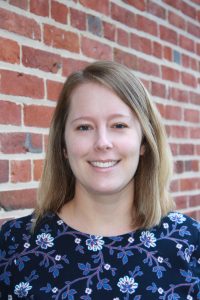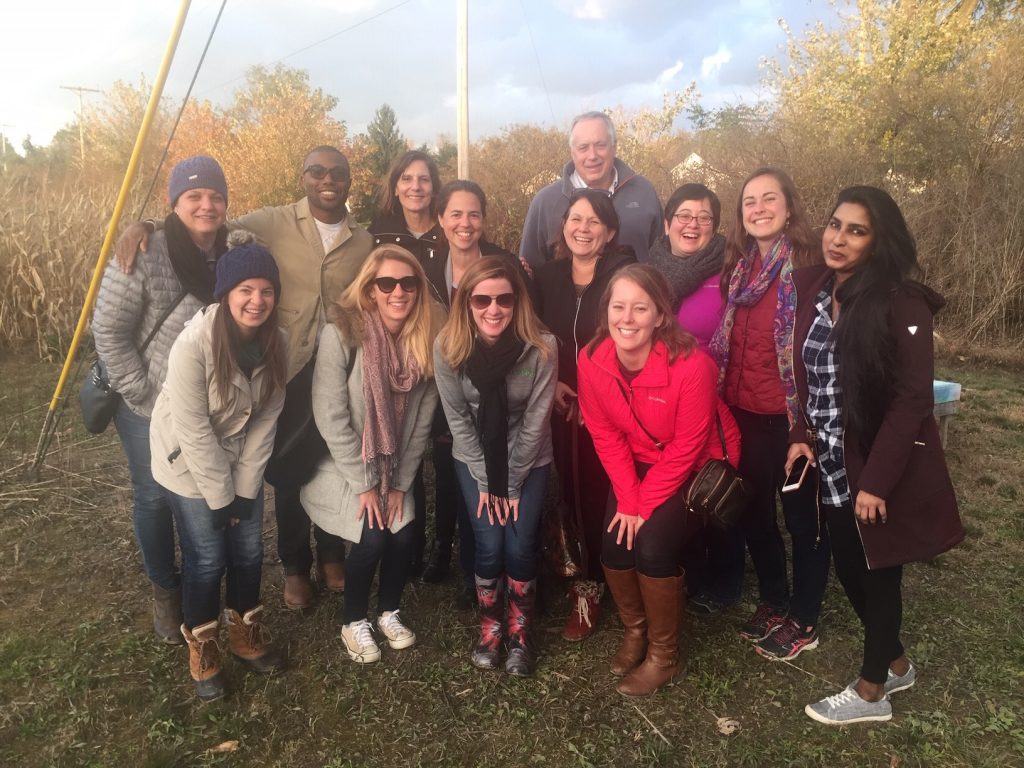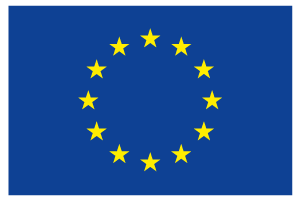
Therapeutic Research in Neuromuscular Disorders Solutions (TRiNDS) is a specialized contract research organization headquartered in Pittsburgh USA with several additional satellite offices around the US, dedicated to conducting high quality research in neuromuscular and rare disorders. TRiNDS provides solutions in Clinical Operations, Data Management, Patient Science Liaison Services, Study Outcomes and Measurements, and Biostatistics.
TRiNDS has undertaken the clinical operations management for the vamorolone Phase 2a study and continues this role for the ongoing Phase 2b study.
We asked Andrea:
What attracted you to work in clinical research?
“What attracted me to clinical research is the ability to make a very real impact on the lives of individuals. My background is as a genetic counselor, so doing clinical research for rare genetic disorders allows me to utilize my training as a genetic counselor. I am also a “process person,” and clinical research allows many opportunities for creating and perfecting processes!”
What is the trial manager’s role?
“A trial manager is responsible for the day to day operations of a clinical trials, which can be anything from helping to develop the protocol, to identifying appropriate vendors and trial sites, to ensuring that study timelines and deliverables are met. Communication is a big part of the role. Often the trial manager is the main point of contact for the various vendors and central staff for the trial.””
How many clinical trials have you managed, and have they all been in children?
“I have managed 5-10 trials, both in children and adults. I have also worked as a study coordinator for several other studies.”
What are the different roles TRiNDS takes in a clinical trial programme?
“TRiNDS offers customized clinical trial solutions based on the needs of the client’s project. Our five main solutions are: clinical operations, data management, patient science liaison, study outcomes and measurements, and biostatistics. For the vamorolone Phase 2b study most of our services are being utilized.””
TRINDS is new on the scene, what experience does it have?
“While TRiNDS was established in 2016, its leadership has along-standing history in neuromuscular research. TRiNDS was formed as an independent company based on our experience as the coordinating center for the Cooperative International Neuromuscular Research Group (CINRG). CINRG is an academic global clinical trial network and has a 15+ year history of conducting high quality clinical research for neuromuscular conditions. The largest study conducted using the CINRG network is our Duchenne Natural History study, the largest prospective natural history study for Duchenne muscular dystrophy (DMD).The CINRG Executive Committee elected TRiNDS to be its coordinating center in the Summer of 2017.”
Why was TRiNDS set up rather than keeping it in an academic centre?
“Prior to the creation of TRiNDS, much of the CINRG coordinating center roles were based in academic institutions. As more potential therapies entered the neuromuscular space, the neuromuscular clinical research landscape shifted from being largely grant-funded to be industry-funded.With the changing landscape, the formation of a company was essential to meet the research and client needs. TRiNDS is now able to provide more efficient and flexible business practices as well as independent legal representation for the CINRG network.”
A lot of trials are now done in different hospitals and different countries, how do you ensure trials are done to the same standard?
“It’s critical that clinical trials are done in the same way everywhere. Conducting a clinical trial consistently requires standardization across sites through centralized networks like CINRG through methods such as:
- Development of the standardized materials and methods to help sites succeed.
- Regular communication with our teams and sites to make sure that everyone is staying consistent.
- Onsite monitoring visits.
- Regular review and querying of the data centrally.
- Specialized training and oversight by our clinical evaluator managers (physical therapists) who work with sites to make sure that all strength and function tests are done in the same way.”
What are the challenges of dealing with different sites?
“There are several challenging aspects of multicentre trials:Working toward standardization across sites and time zones, knowing the country and regional regulations, and maintaining relationships with trial centers are all important. For example, is every site collecting the echo cardiogram measure in the same way so that the data can be meaningfully compared across sites?What are the local regulations that govern the start and conduct or a trial? It is nearly impossible for one individual to be an expert in all sites/regions,so we partner with local experts to provide that local expertise.”
Often it seems to take a long time for trials to start, what are the reasons for this?
“Trials are complicated and getting them started can take longer than we would hope or expect. There are so many factors that go into these timelines and sometimes one delay in the process can slow down other steps. Many steps are needed before a trial can start: You need regulatory advice about how the study is designed to ensure that the results will be meaningful and will get the drug to market, you need a way to produce the drug, you need preclinical work to show that the drug is safe for clinical trials, you need regulatory, ethical,and other local approvals, you need contracts for the work that vendors and sites do, and many others. These steps are important to protect patient rights and safety, to protect the scientific rigor, and to ensure that trials work smoothly once they’re open. Trial sites are very busy and often balance multiple different studies for the same population. We work hard to make the process go as quickly as we can, but it’s always difficult.”
What is your role in the vamorolone progamme?
“TRiNDS is responsible for several key components of the vamorolone programme that include clinical operations oversight, data management, clinical evaluation, and data and safety monitoring. My role as the lead project manager is to oversee and manage the clinical operations work with day-to-day management of the participating centers. Our team has created and/or reviewed the study documents, like the protocol, study plans, manuals and operating procedures, and also to ensure consistency across the many partners involved in the study.”
What questions should we have asked you?
“You should ask me why I am excited about the vamorolone program! I am excited about the vamorolone program because vamorolone has the possibility of making a meaningful impact on the daily lives of boys with Duchenne muscular dystrophy (DMD) and their families. Vamorolone is not a mutation-specific therapy so it has the potential to work on all boys with DMD and possibly patients with other disorders in the future. The program also prides itself in being very patient-focused, which I can attest is definitely true!”

